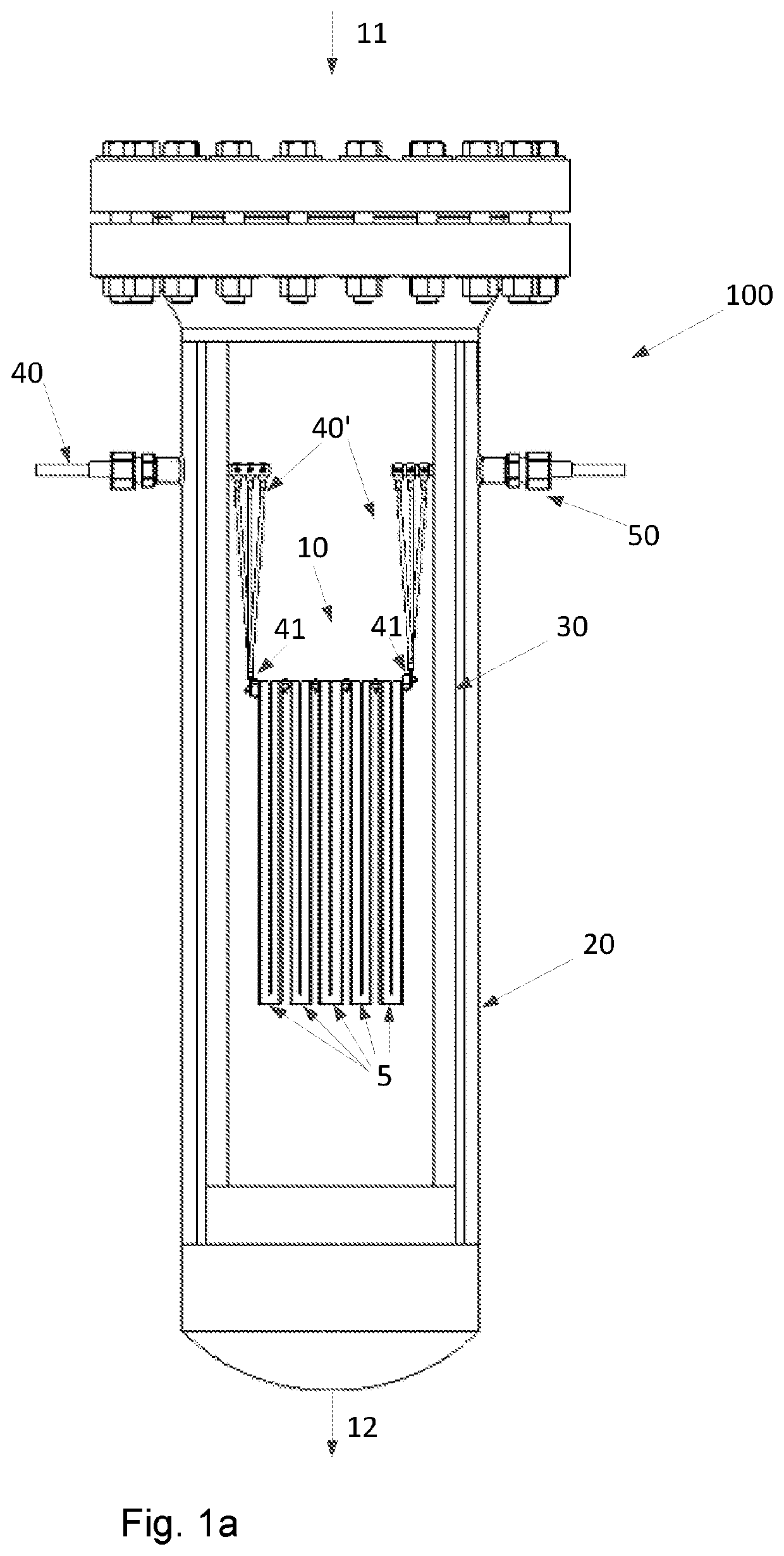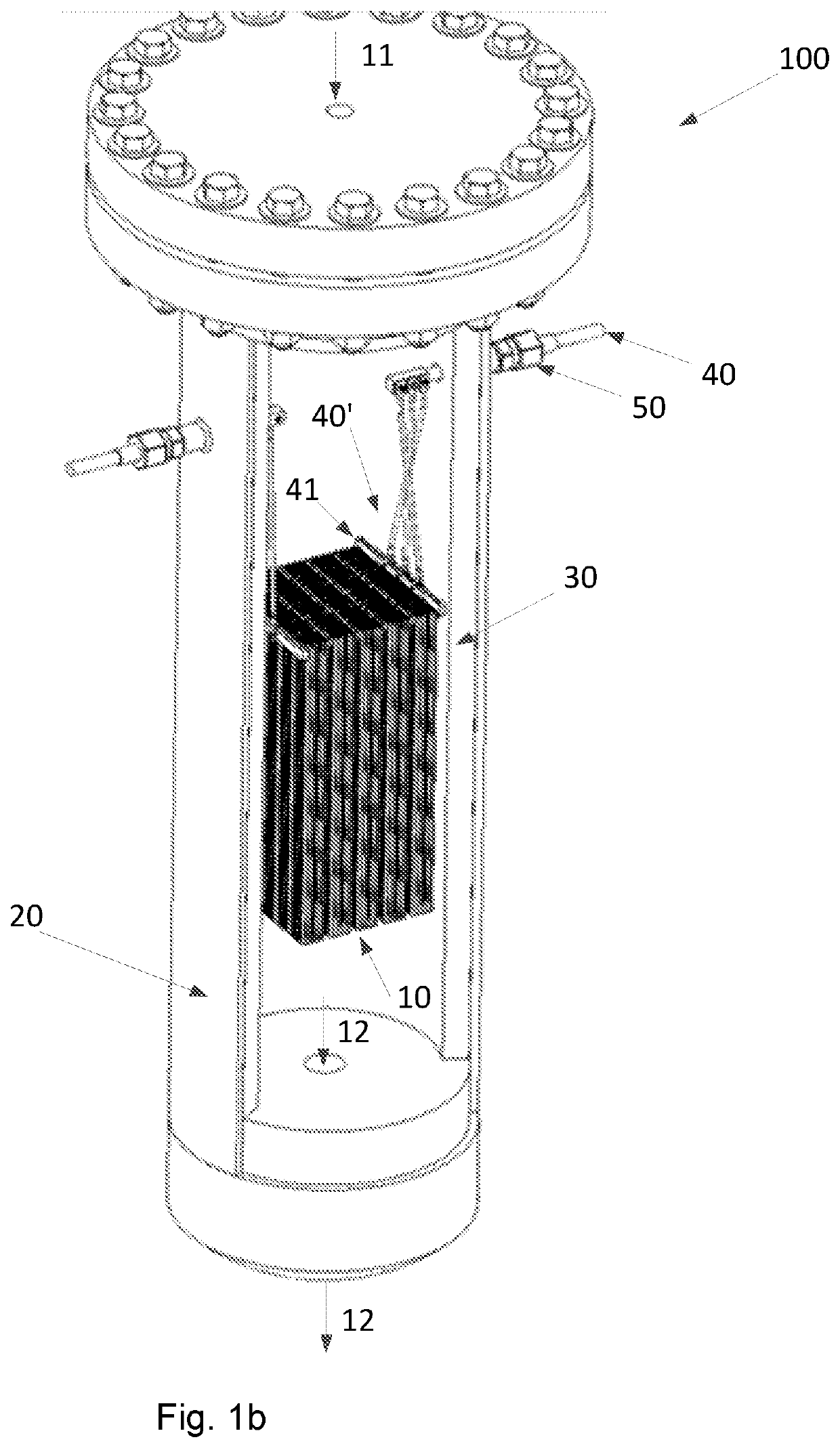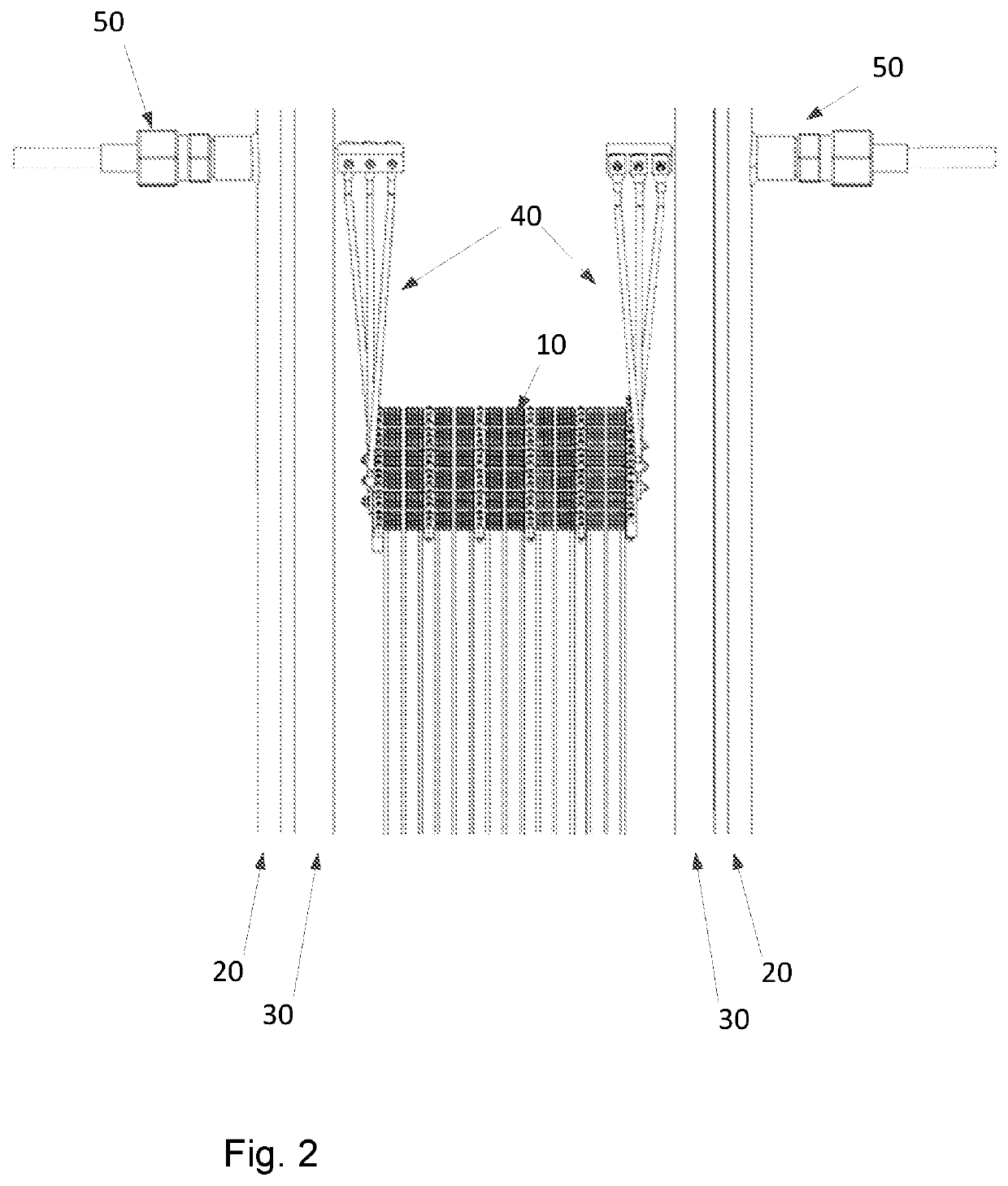Endothermic reactions heated by resistance heating
a technology of resistance heating and endothermic reactions, applied in the field of reactor systems, can solve the problems of endothermic reactions, slow heat transfer by conventional heat transfer, convection and/or radiation heating, etc., and achieve the effects of facilitating steam reforming reaction, reducing the overall emission of carbon dioxide and other emissions detrimental to the climate, and facilitating the steam reforming reaction
- Summary
- Abstract
- Description
- Claims
- Application Information
AI Technical Summary
Benefits of technology
Problems solved by technology
Method used
Image
Examples
example 2
[0149]An example calculation of the process of the invention is given in Table 2 below. A hydrocarbon feed stream comprising i.a. a hydrocarbon gas, hydrogen and steam is fed to the reactor system of the invention. The feed stream entering the reactor system is pressurized to a pressure of 28 kg / cm2·g and has a temperature of 500° C. Inside the reactor system, a structured catalyst in the form of 1 macroscopic structure having a square cross section is placed which has a size of 0.4 times 0.4 times 0.35 meter. The structured catalyst additionally has 10000 channels with a square cross section having a side or edge length of 0.32 cm. The structured catalyst has slits parallel to the longitudinal direction thereof, so that clusters of 5 times 5 channels are formed. The clusters are individually insulated from the neighboring cluster, except from the ends, so that the current path through the structured catalyst is a zigzag path. A current of 200 A and a voltage of ca. 500 V are applie...
example 3
[0152]An example calculation of the process of the invention is given in Table 3 below. A hydrocarbon feed stream comprising i.a. a hydrocarbon gas, hydrogen and steam is fed to the reactor system of the invention. The feed stream entering the reactor system is pressurized to a pressure of 97 bar, viz. 97 kg / cm2·g and has a temperature of 500° C.
[0153]Inside the reactor system, a structured catalyst comprising nine macroscopic structures having a square cross section are placed in an array and each macroscopic structure has a size of 0.53 times 0.53 times 2.3 meter. Each macroscopic structure additionally has 17778 channels with a square cross section having a side or edge length of 0.32 cm. Each macroscopic structure has slits parallel to the longitudinal direction thereof, so that clusters of 5 times 5 channels are formed. The clusters are individually insulated from the neighboring cluster, except from the ends so that the current path through the structured catalyst is a zigzag ...
example 4
[0157]An example calculation of the process of the invention is given in Table 3 below. A hydrocarbon feed stream comprising i.a. a hydrocarbon gas, hydrogen and steam is fed to the reactor system of the invention. The feed stream entering the reactor system is pressurized to a pressure of 28 bar, viz. 28 kg / cm2·g and has a temperature of 500° C.
[0158]Inside the reactor system, structured catalyst comprising 25 macroscopic structures having a square cross section are placed in an array and each macroscopic structure has a size of 0.24 times 0.24 times 1.8 meter. Each macroscopic structure additionally has 4702 channels with a square cross section having a side or edge length of 0.33 cm in length. Each macroscopic structure has slits parallel to the longitudinal direction thereof, so that clusters of 10 times 10 channels are formed. The clusters are individually insulated from the neighboring cluster, except from the ends, so that the current path through the structured catalyst is a...
PUM
| Property | Measurement | Unit |
|---|---|---|
| Temperature | aaaaa | aaaaa |
| Temperature | aaaaa | aaaaa |
| Temperature | aaaaa | aaaaa |
Abstract
Description
Claims
Application Information
 Login to View More
Login to View More - R&D
- Intellectual Property
- Life Sciences
- Materials
- Tech Scout
- Unparalleled Data Quality
- Higher Quality Content
- 60% Fewer Hallucinations
Browse by: Latest US Patents, China's latest patents, Technical Efficacy Thesaurus, Application Domain, Technology Topic, Popular Technical Reports.
© 2025 PatSnap. All rights reserved.Legal|Privacy policy|Modern Slavery Act Transparency Statement|Sitemap|About US| Contact US: help@patsnap.com



